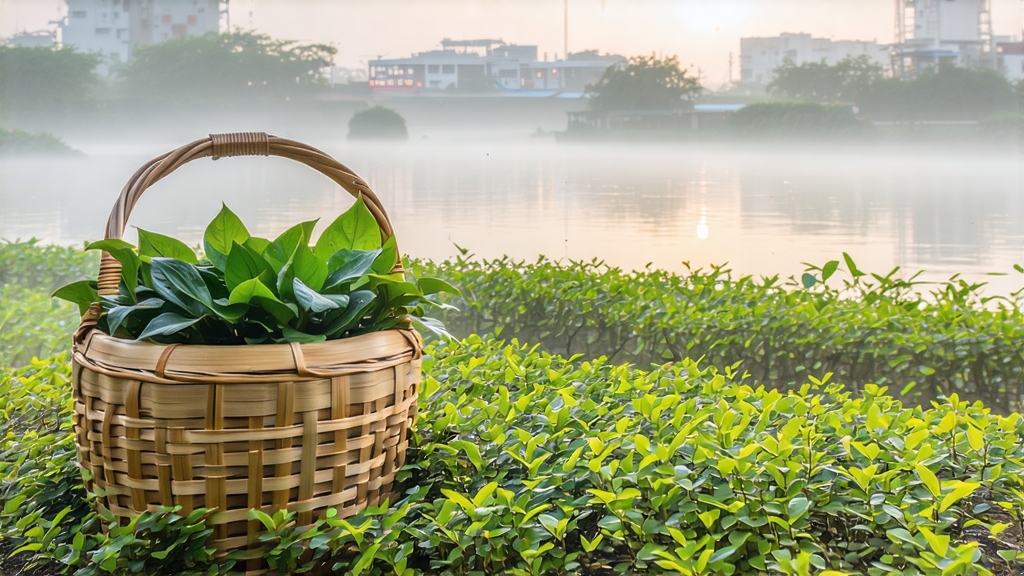
If green tea is the living memory of China, then Longjing—often spelled Lung Ching in older texts—is the verse that every Chinese person can recite by heart. Named after the “Dragon-Well” spring that nestles beneath weather-worn cliffs on the western shore of Hangzhou’s West Lake, this tea has transcended its beverage status to become a cultural emblem, a diplomatic gift, and a seasonal ritual that marks the arrival of spring more reliably than any calendar.
Historical whispers place Longjing’s birth during the Tang dynasty (618-907 CE), yet its apotheosis arrived a millennium later when the Kangxi Emperor (r. 1661-1722) visited the Hu Gong temple south of the lake. Legend claims that the monks served him a cup so fragrant that the emperor immediately conferred imperial status upon the eighteen bushes that still survive today. Those venerable plants are now fenced off like museum relics; every April their first flush is auctioned for sums that rival vintage Bordeaux. Such lore is not mere marketing: Qing-era court records list Longjing among the “tribute teas” whose harvest was rushed northward by relay riders so that the emperor could taste the spring before the rest of the empire.
Geography is the first, non-negotiable clause in Longjing’s identity. The West Lake microclimate—mist coaxed by the adjacent Qiantang River, quartz-rich sandstones that heat up by day and cool by night, and an average annual humidity of 80 %—slows leaf growth so that amino acids accumulate while catechins remain gentle. The result is a sweetness that suggests fresh peas and a briskness that tingles like white grapefruit. Within the officially demarcated 168 km² core zone, five sub-villages compete for prestige: Shi (Lion), Long (Dragon), Yun (Cloud), Hu (Tiger), and Mei (Plum). Purists insist that Lion Peak offers the most “orchid fragrance,” while Mei Jia Wu produces a rounder, nuttier cup. Travelers who hike the terraced paths in late March can still see tiny stone huts where farmers store night-soil in clay jars; the traditional fertiliser is fermented so thoroughly that no barnyard scent survives, only a faint marine note reminiscent of kelp.
Botanically, Longjing is almost exclusively the Shi Feng variety of Camellia sinensis var. sinensis, a shrub whose leaves are noticeably broader and more deeply serrated than the cultivars grown in Sichuan or Yunnan. Since the 1980s clonal selections such as #43 and #117 have been promoted for higher yield and frost resistance, yet connoisseurs continue to champion the old “group cultivar” whose genetic diversity translates into layered aromatics. The local proverb states, “One day earlier, a treasure; one day later, grass,” so plucking begins the instant the thermometer nudges 12 °C for three consecutive days. Only the standard “one bud with one unfolding leaf” is taken; anything larger is diverted to cheaper grades. A skilled picker can gather just 600 g of fresh leaf in a day—barely enough, once desiccated, for 150 g of finished tea.
The moment leaves leave the bush, the clock starts ticking. They are carried in shallow bamboo trays to prevent bruising, then “spread” in shaded draft barns for 4–8 h to reduce moisture from 75 % to roughly 68 %. This withering phase is unique among Chinese greens; it softens cell walls so that the subsequent pan-firing can proceed without scorching. Next comes the signature kill-green step, sha qing, performed on a wok whose seasoned surface has been polished for decades by nothing more abrasive than a tuft of fresh tea leaves. The temperature is dialed to an initial 280 °C, hot enough to make a drop of water skitter like mercury. The master—almost always a woman whose forearms are roped with muscle—tosses 150 g of leaf in rhythmic arcs, pressing it against the iron for milliseconds at a time. Within three minutes the grassy volatiles vanish, replaced by a chestnut-sweet lactone that chemists identify as 2-acetyl-1-pyrroline, the same compound that perfumes freshly cooked basmati rice.
While most green teas are rolled into tight spirals or needles, Longjing is “pressed flat” while still warm. The craftsman lowers the wok temperature to 80 °C, cups the leaves in both palms, and applies just enough pressure to squeeze a faint rustle of moisture onto the iron. Ten repetitions over fifteen minutes yield the